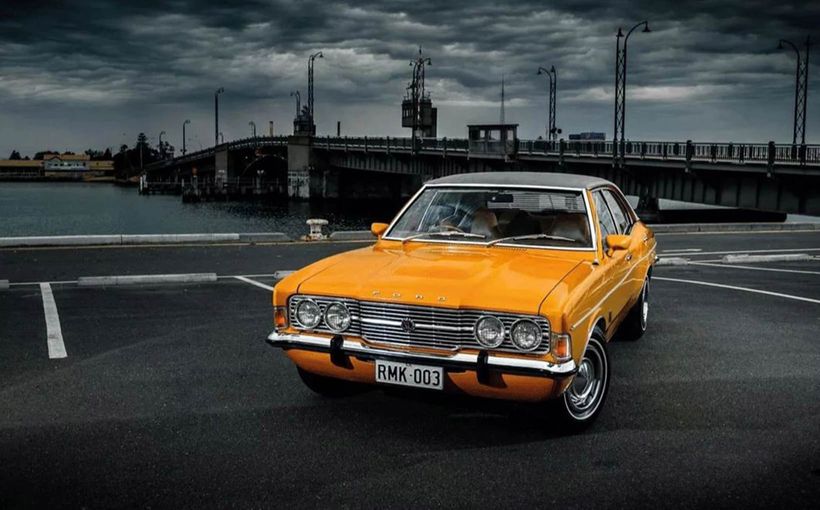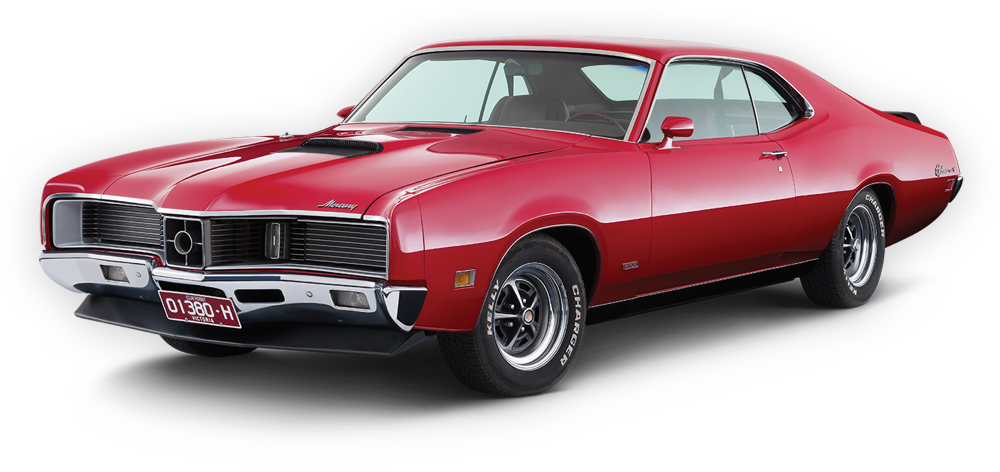1970 Monte Carlo: Better Late Than Never

In its first year, Chevrolet’s 1970 Monte Carlo outsold its main rival, Ford’s Thunderbird, almost three to one. It was hailed as an automotive success and continued to lead the sales charts for over 20 years.

Chevrolet’s belated success in the “personal car” category has overshadowed another issue. Why did Chevrolet wait 12 years to create the Monte Carlo after the release of the four-seater 1958 Thunderbird?
The reason is simple. They were caught off guard by a fast moving and much less risk averse Ford, with, from 1960, Lee Iacocca at its helm supported by a cadre of smart, future focused young executives wanting to beat Chevrolet and GM.
GM’s design boss, Bill Mitchell, recalled the impact of the 1958 four-seater Thunderbird had at GM in a 1984 interview with the Benson Ford Research Centre:
“Out comes the Thunderbird. Oh, (they) caught us, and we didn't have a four passenger (car like it).”
And it was not just the ’58 T-Bird that caught Chevrolet and GM asleep. You can add the 1960 Falcon, 1962 Fairlane and 1964 Mustang to the list. Essentially, Ford, the number two in the market, was pioneering new segments with appealing cars, relegating market leader GM to the status of a mere follower


In his interview, Mitchell went on to describe the immediate reaction of GM’s dealers to the T-Bird and their disappointment with GM’s president, John Gordon for not having an equivalent.
“The dealers got after him and letters came in. So, Gordon told me to see what we could do.”
Back then, all Mitchell could do to placate GM’s dealers was to instigate a project which ultimately ended up as the 1963 Buick Riviera.

In the meantime, Chevrolet portrayed its full sized ’58 Impala as a Thunderbird competitor and Pontiac did similar with its Bonneville. In 1961 Oldsmobile touted its new Starfire as a T-Bird alternative and in 1962 Pontiac switched its focus from the limo-like Bonneville to the slightly smaller Grand Prix. Please see my April 2021 Retroautos® story about the 1963 Riviera for a longer discussion. There’s a link at the end


The 1960 Falcon was another example of Ford leading GM. Rather than create a simple and economical compact car, GM invested billions of dollars (in today’s money) in the rear engine Corvair. And we all know what happen there. GM realised its error, and 14 months later the 1962 Chevy II/Nova appeared. A Falcon clone if ever the was one.


Ford again set the benchmark in 1962 with the release of the mid-sized Fairlane. GM’s product planners initially considered the segment to be unviable. When they realised the potential, GM had to fast track the development of its own mid-sizers. By the time GM’s cars appeared in 1964, Ford had sold 544,000 Fairlanes.


Ford moved the goal posts again with the Mustang, creating the pony car craze. Once again, GM was initially sceptical of the new car. Once again, they had to quickly develop the 1967 Camaro/Firebird twins. You can read my story about how GM lost the opportunity to have a Camaro in 1965 in the February 2023 Retroautos®. There is a link at the end.
It was not until early 1967 that Chevrolet’s product planners finally admitted the division needed to a T-Bird equivalent. No doubt they were also anxious at Pontiac’s plans to downsize its Grand Prix for a 1969 release and take the fight to the T-Bird. They did not want to be left behind, again.

In an interview with Car and Driver in 1970, Chevrolet’s chief engineer, Alec Mair and chief designer David Holls, gave their version of why Chevrolet was so slow to respond to the T-Bird:
“(Chevrolet) already had a full line of Chevelles and Impalas that overlapped in price and function, so there was not much sense in building another model to nip away at sales of those it already had. To be a success the Monte Carlo had to be a conquest car.”
By a “conquest car”, Mair and Holls meant a model that took sales from the opposition or created a new market segment. Mair and Holls were confident about how that had to be achieved:
“The way to do that was with styling…a distinct appearance…a car that looked expensive and traditional.”


Holls believed a key component of that distinctive appearance was a seriously long bonnet and short boot, if only to match what Pontiac were doing with their Grand Prix.
The design packaged stipulated a 116 inch/2946mm wheelbase. To keep costs down, it was mandated that the Monte Carlo be underpinned by an existing Chevrolet platform.
The full-sized Chevrolet was considered too wide and too long to shrink. The Holden Kingswood-sized Nova proved too costly to stretch and widen. Plus, its coupe was pillared. Holls wanted a hardtop for the Monte Carlo. That left the 1968 Chevelle. It’s hardtop coupe sat on a 112 inch /2845mm wheelbase and the sedan on 116 inches/2946mm.


Now, you might think that the Chevelle sedan chassis was the perfect solution to support the Monte Carlo. Not so. The problem was that all the sedan’s extra inches were devoted to the passenger area aft of the firewall. For the Monte Carlo, a car that was all about a distinctive shape and a very long bonnet, those additional sedan inches were in the absolute wrong place.
To get the vast bonnet the Chevelle coupe was chosen, and the extra wheelbase inches/mm were added ahead of the firewall. Then just to make sure, another four inches/100mm were added to the front overhan

Stretching the front of the car delivered engineering cost savings and other benefits. The engine did not have to be moved in the Chevelle chassis. This created better weight distribution. Further, the Chevelle’s existing engine linkages, driveshaft, transmission location, air-conditioning conduits, wipers and most of its wiring loom could be used. More costs were saved by carrying over the Chevelle’s rear window, boot lid, roof, pillars, suspension and much of the car’s inner structure including its cowl and firewall


The upside for Holls was that the engineering savings were redeployed to fund the Monte Carlo’s exclusive sheet metal and luxurious interior.
The styling of the Monte Carlo was not a complicated process. Because the basic shape was derived from Chevelle, the main styling theme was in place by late 1967. From then on it was a matter of refinement



A four-door Monte Carlo was considered and rejected. To retain the Monte Carlo’s proportions and accommodate rear seat passengers, the wheelbase had to be extended rearward by a further five inches/127mm. That almost equalled the dimensions of a full-sized Chevrolet Caprice. What was the point, then? Hence the rejection. Plus, with the sales of the two door sales proving so strong, it was calculated that a four door would not add much volume or profit.

And strong sales they were! The combination of a $2,000/40% price differential in the Monte Carlo’s favour compared to the T-Bird, and the styling, proved irresistible. The 1970-72 model found favour with 406,000 buyers. Over the same years, the T-Bird went to 144,200 Ford fans. In April 1970 Popular Mechanics magazine published an ownership survey. Over 80% said they bought the Monte Carlo because of the styling.

Chevrolet sold 4.5 million Monte Carlos between 1970 to 2007, with a break from 1989 to 1995. The T-Bird went to just over 4.4 million people between 1955 to 2005. Its hiatus spanned 1998 to 2001. Those are amazing numbers which again prove that styling really does sell cars.


Special thanks to John Kyros at GM Heritage Centre. Retroautos® is written and published by David Burrell with passion and with pride. Retroautos® stories and images are copyrighted. Reproducing them in any format is prohibited. Retroautos® is a registered trademark. Reproducing it in any format is prohibited.
More reading








